Preview of April 2022 Newsletter
Editor’s Note
“We do feel the economy is very strong and well positioned to withstand tighter monetary policy.” — Jerome H. Powell
While the month closed on a down note, March was nicely positive for equity investors, even as gains on the large-cap-dominated indexes outpaced those of the average stock. True, January and February were both dismal, and Growth outperformed Value last month, but those not following the markets closely may be surprised that equity-market year-to-date losses were pared during March. After all, the war in Ukraine dominating the daily headlines, commodity prices moving sharply higher, with inflation proving to be far from transitory, and the Federal Reserve initiating the first of an expected series of hikes in the Federal Funds rate were headwinds that many might have assumed would be too stiff for stocks to overcome.
Of course, making sense of short-term market gyrations is difficult. Volatility is very much normal, with 5% setbacks/advances happening three times per year on average and 10% corrections/rallies taking place every 11 months, so nothing we have witnessed this year or last, when stocks enjoyed terrific gains, is unusual. That does not stop the financial press from seeking to rationalize each day’s activity, even as most of the eyeballs viewing the stories are attached to investors with a long-term view and the reasoning often grows stale very quickly.
For example, stocks jumped on March 29, with one strategist opining, “Markets seem to have become much more comfortable with the idea that the hiking cycle is here, that it won’t derail economic growth and that equity markets are the place to be.” However, the very next day, stocks fell, with another market watcher proclaiming, “The GDP numbers [revised 6.9% growth for Q4, down from 7.0%] were weaker than we were expecting. It looks like we are getting a soft patch in the first quarter.”
To be sure, traders will react and overreact to the news of the day, but our time horizon is measured in years, so our focus is always on the long-term implications. Indeed, very little ever disturbs our view that equities will prove rewarding in the fullness of time, with our faith supported by our constant attention to market history.
Sadly, many folks view the equity markets as a casino, with the odds stacked against them, but the statistical evidence shows this to be entirely untrue. Value stocks, per data from Professors Eugene F. Fama and Kenneth R. French, have appreciated 63.2% of the time on a monthly basis, 67.8% of the time on a quarterly basis, 73.2% of the time on a one-year basis, 89.5% of the time on a 5-year basis and 96.7% of the time on a 10-year basis. Obviously, with Value returns averaging 13.3% per annum since 1927, it isn’t hard for us to stick with our approach through thick and thin.
Certainly, the past is not always prologue and geopolitics is a wildcard, but as we highlight in this month’s Graphic Detail, Fed tightening, high inflation and rising interest rates have previously been reasons to buy, not sell, Value stocks, on average. And, perhaps even more germane as we go to press, the S&P 500 has returned 16.0% one year later, on average, the previous nine times the 10-Year/2-Year U.S. Treasury yield curve has become inverted. True, many are warning that the latest inversion could signal a recession is coming, but the creation of 431,000 jobs and an unemployment rate of 3.6% in March does not suggest an economic contraction is imminent. And, even the disappointing March ISM Manufacturing PMI of 57.1 was well above average and correlates with 2.9% real GDP growth on an annual basis.
We know that economic data has weakened somewhat and recessions have not been banned, but such is not the projection of the Fed for ‘22 or ‘23, while the famous quip states that economists have predicted nine of the last five recessions. Still, we take comfort that Value stock returns have been solid (9.5% on average) in the 12 months before a real economic downturn commences and OK (4.6% on average) in the year after a contraction has begun.
Graphic Detail: Fed Funds, Interest & Inflation Rates
With inflation proving not to be transitory, especially given the recent spike in commodity prices due to the Russian invasion of Ukraine, the Federal Reserve shifted to a tighter stance on monetary policy last month. The move was well-telegraphed, and equity prices rallied on the news, even as the Fed also said it expects to begin reducing its holdings of Treasury securities and agency debt and agency mortgage-backed securities at a coming meeting. Of course, few expected Jerome H. Powell & Co. to estimate that the 25-basis-point increase in the Fed Funds rate in March will be the first of 10 or 11 quarter-point hikes by the end of 2023 in the rate at which depository institutions lend to each other.
Sounds like a massive level of monetary tightening, until one remembers that the average Fed Funds rate dating back to 1970 is 5.0% and that the latest longer-run Fed estimate for the widely watched benchmark is 2.4%. True, the economic projections of Federal Reserve Board members and Bank presidents now suggest that PCE inflation will average 4.3% this year and 2.7% next year, up from respective forecasts made three months earlier of 2.6% and 2.3%. In addition, the expectation for real GDP growth for 2022 came down from 4.0% to a still healthy 2.8%, but the outlook for 2023 remained unchanged at 2.2%, as did the 3.5% unemployment rate prediction for each year.
And Chair Powell said at his March 16 press conference, “The probability of a recession within the next year is not particularly elevated. And why do I say that? Aggregate demand is currently strong, and most forecasters expect it to remain so. If you look at the labor market, also very strong. Conditions are tight, and payroll job growth is continuing at very high levels. Household and business balance sheets are strong. And so all signs are that this is a strong economy and, indeed, one that will be able to flourish, not to say withstand but certainly flourish, as well, in the face of less accommodative monetary policy.”
Despite the economic optimism, we realize that many are spooked by elevated inflation and higher interest rates. After all, prices at the pump have skyrocketed and the yield on the 10-year U.S. Treasury is now 2.38%, up from 1.51% three months ago. However, history reveals that rising Fed Funds, U.S. Treasury and/or inflation rates have not spelled doom for stocks. Past performance does not guarantee future returns and statisticians may fault the relatively small sample sets and tremendous dispersions between min and max, but we like what the data show on average in regard to equities in general and Value stocks in particular no matter the direction of rates.
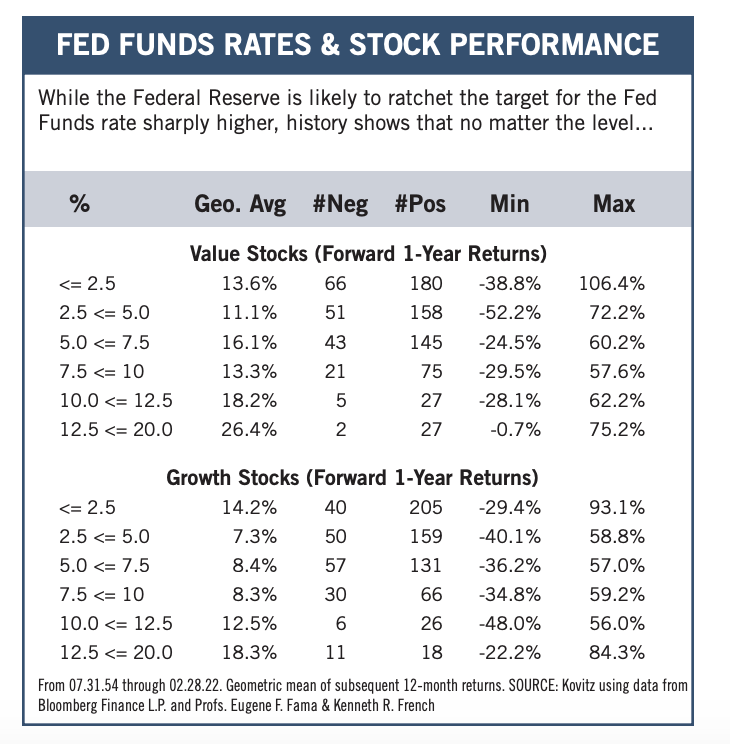
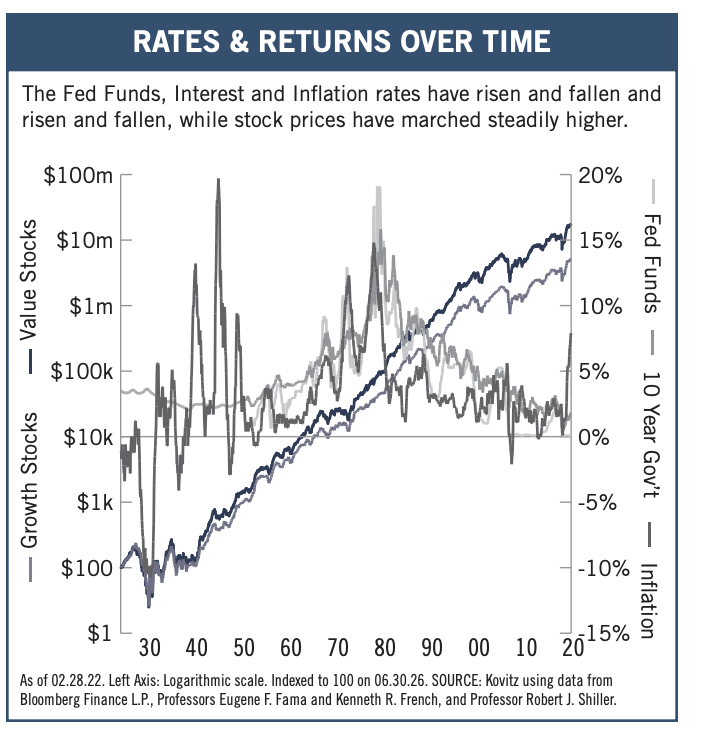
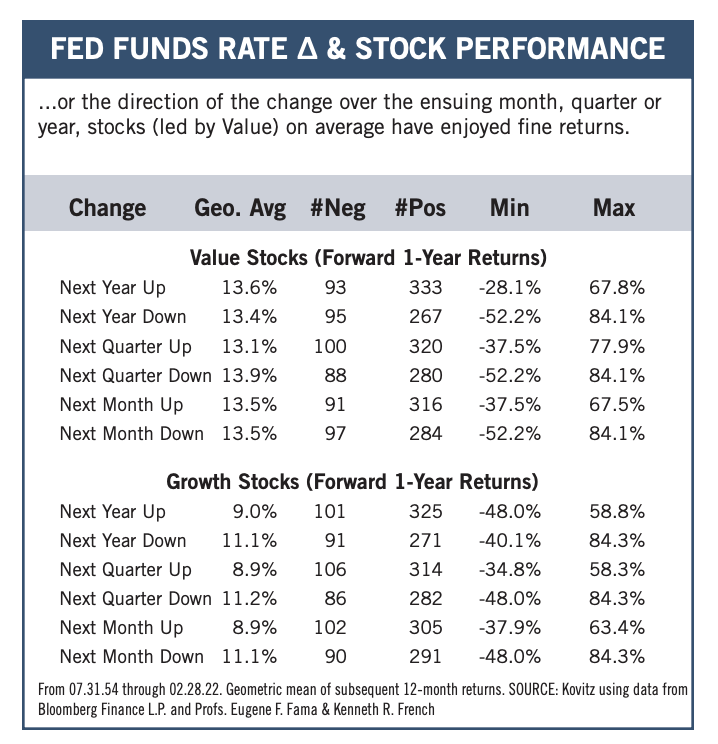
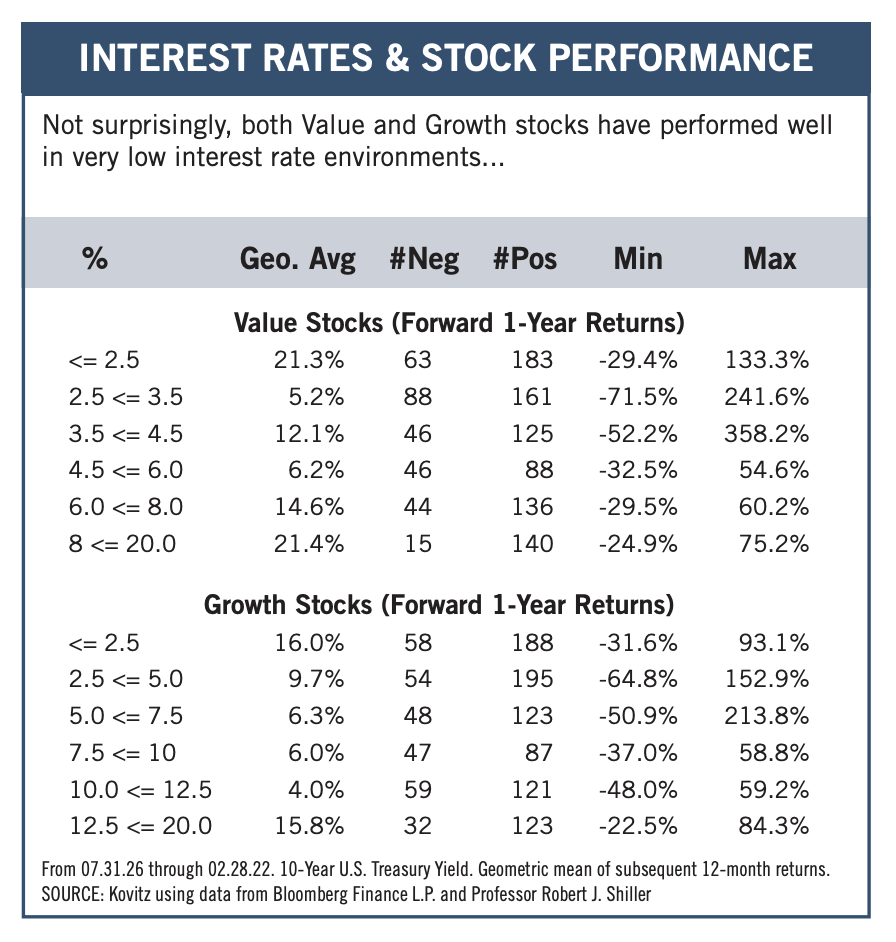
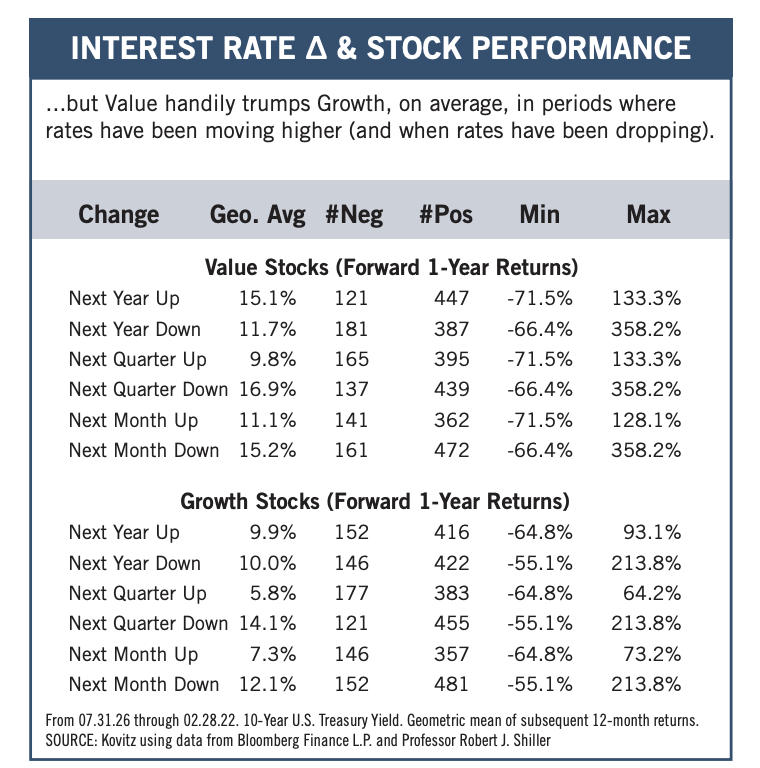
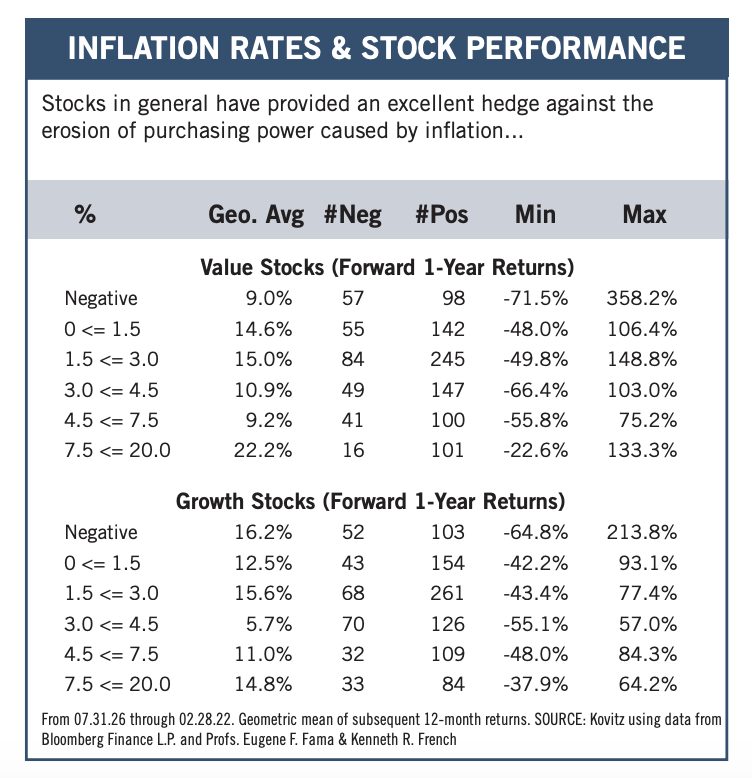
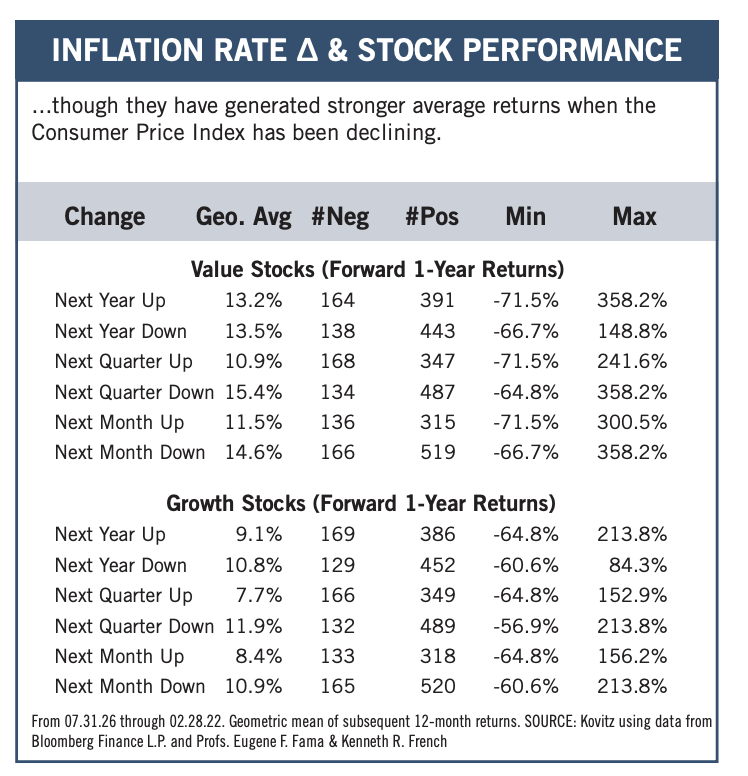
Recommended Stock List
In this space, we list all of the stocks we own across our multi-cap-value managed account strategies and in our four newsletter portfolios. See the last page for pertinent information on our flagship TPS strategy, which has been in existence since the launch of The Prudent Speculator in March 1977.
Readers are likely aware that TPS has long been monitored by The Hulbert Financial Digest (“Hulbert”). As industry watchdog Mark Hulbert states, “Hulbert was founded in 1980 with the goal of tracking investment advisory newsletters. Ever since it has been the premiere source of objective and independent performance ratings for the industry.” For info on the newsletters tracked by Hulbert, visit: http://hulbertratings.com/since-inception/
Keeping in mind that all stocks are rated as “Buys” until such time as we issue an official Sales Alert, we believe that all of the companies in the tables on these pages trade for significant discounts to our determination of longterm fair value and/or offer favorable risk/reward profiles. Note that, while we always seek substantial capital gains, we require lower appreciation potential for stocks that we deem to have more stable earnings streams, more diversified businesses and stronger balance sheets. The natural corollary is that riskier companies must offer far greater upside to warrant a recommendation. Further, as total return is how performance is ultimately judged, we explicitly factor dividend payments into our analytical work.
While we always like to state that we like all of our children equally, meaning that we would be fine in purchasing any of the 100+ stocks, we remind subscribers that we very much advocate broad portfolio diversification with TPS Portfolio holding more than eighty of these companies. Of course, we respect that some folks may prefer a more concentrated portfolio, however our minimum comfort level in terms of number of overall holdings in a broadly diversified portfolio is at least thirty!
TPS rankings and performance are derived from hypothetical transactions “entered” by Hulbert based on recommendations provided within TPS, and according to Hulbert’s own procedures, irrespective of specific prices shown within TPS, where applicable. Such performance does not reflect the actual experience of any TPS subscriber. Hulbert applies a hypothetical commission to all “transactions” based on an average rate that is charged by the largest discount brokers in the U.S., and which rate is solely determined by Hulbert. Hulbert’s performance calculations do not incorporate the effects of taxes, fees, or other expenses. TPS pays an annual fee to be monitored and ranked by Hulbert. With respect to “since inception” performance, Hulbert has compared TPS to 19 other newsletters across 62 strategies (as of the date of this publication). Past performance is not an indication of future results. For additional information about Hulbert’s methodology, visit: http://hulbertratings.com/methodology/.
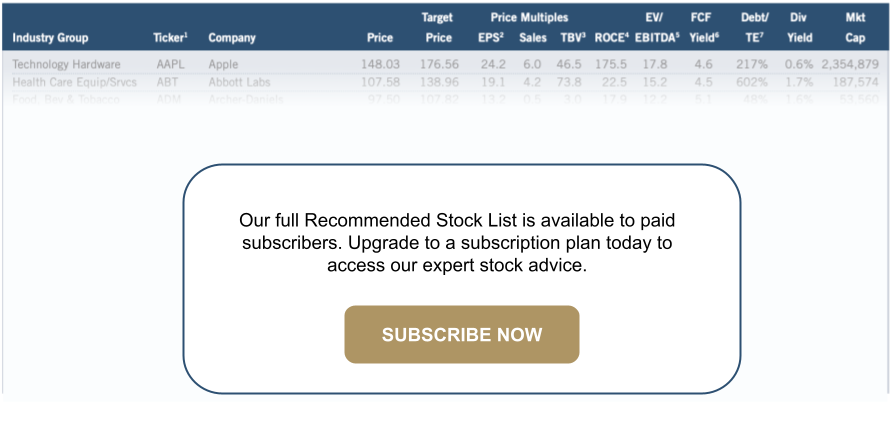
Portfolio Builder
Each month in this column, we highlight 10 stocks with which readers might populate their portfolios: Amgen (AMGN), Comerica (CMA), Tyson Foods (TSN) and seven others.




